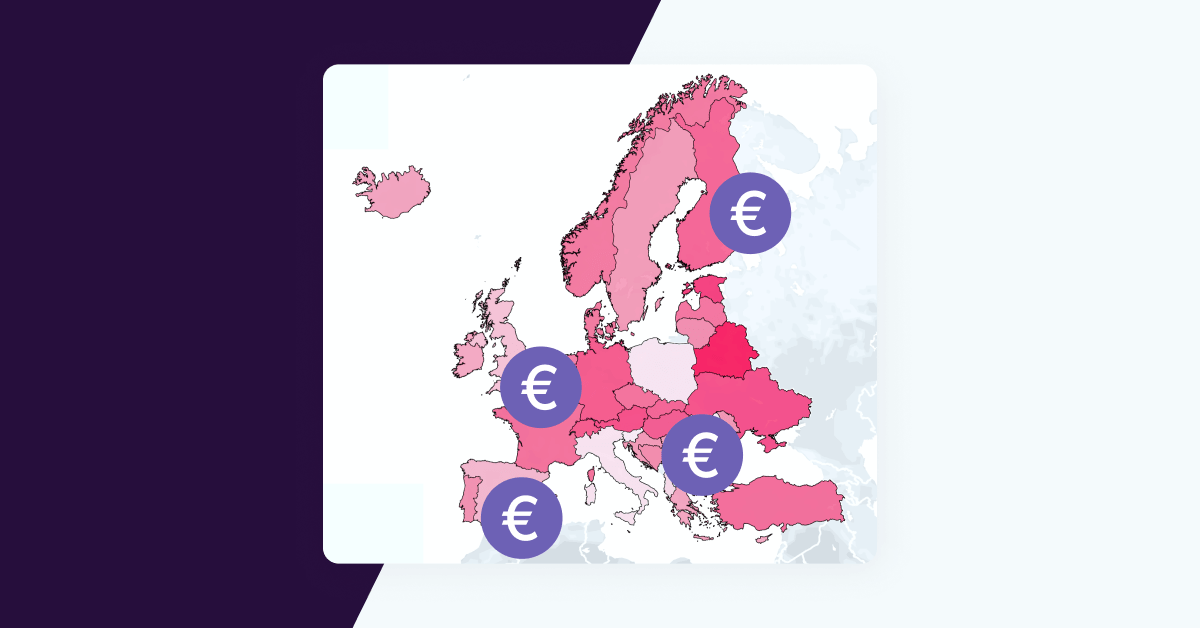How long will it take the U.S. opportunity gap to close? We analyzed the EEO-1 representation data released on September 29, 2022 to quantify the opportunity gap by gender and race, to see which groups are most affected by opportunity gaps, where, and in which industries. We also examined the data to see how fast gaps are closing and the projected dates when they will actually close. This most recent data, which is from 2020, revealed some interesting insights into opportunity in the U.S. and at what pace we’re moving toward equity.
What is an opportunity gap? It’s the lack of equitable access to opportunities, such as jobs, promotions and other types of advancement for certain communities.
Representation in management and leadership positions
 The key point revealed by this analysis is that white men still dominate management and leadership positions in the U.S. While they represent 31% of all employees, they occupy 57% of the top jobs and 44% of mid-level management positions. This makes them 1.9 times as likely as white women to be in these upper level jobs and 3.6 times as likely as men of color. You can see a breakdown of comparisons for other groups in the illustration at right.
The key point revealed by this analysis is that white men still dominate management and leadership positions in the U.S. While they represent 31% of all employees, they occupy 57% of the top jobs and 44% of mid-level management positions. This makes them 1.9 times as likely as white women to be in these upper level jobs and 3.6 times as likely as men of color. You can see a breakdown of comparisons for other groups in the illustration at right.
Black and Latina women tend to be the most underrepresented in leadership and management roles relative to their proportion of the private sector labor force. As you can see in the graphic below, Black women comprise only 1.8% of executives and 4% of mid-level management, despite being 8.3% of all employees. Similarly, Latina women make up only 1.7% of executives and 3.8% of mid-level management, although they are 7.5% of all employees. Other race/ethnicity groups are also underrepresented, but less so.

When will U.S. opportunity gaps close?
Here’s the good news: U.S. opportunity gaps are closing at a slightly increasing pace — but still slowly. We’ve seen improvement since the 2018 data, with the executive opportunity gap changing from 6.7 to 6.1 for women of color, 3.8 to 3.6 for men of color, and 2.0 to 1.9 for white women.
The gaps shrank for Black and Latina women from 9.2 to 8.4 and 8.5 to 8.0, respectively. The number of women of color in executive positions increased by 11% and men of color by 5%, while the number of white women held steady. The number of white men in top jobs decreased by 4%.
The increases for women of color were dramatic and faster than in previous years, causing our forecasted “no-gap year” for women of color in leadership to drop from 2124 to 2095. The gains for men of color were on-trend, and their forecasted no-gap year remains 2107; this reflects the fact that though their executive representation gap is smaller, it is closing more slowly.
How can you identify and close your opportunity gaps?
I discussed the data and how companies can approach closing their opportunity gaps in a recent webinar that included myself, Rebecca Scully, VP of Product at Syndio, and Tony Wu, DEI + Social Impact Manager of national restaurant chain sweetgreen. Rebecca and I discussed how companies can analyze their opportunity gaps, and Tony shared his experience at sweetgreen with doing that analysis and the outcome.
As a method for analyzing opportunity gaps, we advised asking four key questions:
1. What do we look like today?
Understanding your current status is the first step. What are the demographics of our organization, and how do they change by job level, organizational, and location?
2. What should we look like?
I believe the right approach is to think about this in multiple ways to come up with a holistic idea of what’s possible for your organization. So first, look at internal availability, which is based on the principle that management should have similar demographics to the frontline workers they lead. Next is labor pool talent. The labor pools you recruit from will be very different if you work in engineering or hospitality, or if you are in Sioux Falls or Atlanta. You should account for those differences with benchmark data that are specific to the occupation and location. Finally, review community demographics, either of the customers you serve or the places where you do business. You may be in financial services, but if you’re serving an immigrant community, you want to reflect that community.
3. What can we do to improve?
Next is looking at how you can improve. First, identify root drivers behind why your representation is not what you aspire for it to be: are you failing to hire, promote, or retain certain communities? These are fairly easy to identify through rigorous analysis. Then, you can look at whether an issue is company-wide vs. targeted; are women not being promoted in just one department, such as engineering, or is it a widespread situation? After you answer these questions, you can prioritize and develop a strategy.
4. How do we talk about it?
Once you’ve done this analysis, you’ll need to talk about it to several different groups: company leadership, the board, employees. And you will need to provide a different level of detail for each audience. Company leadership may want to go deep, particularly if there is a DEI council, while the board may want a high level readout of issues & accompanying strategies. Communicating with employees and the public requires a different way to distill the narrative, providing enough detail to transparently communicate the current state without going too deep and without disclosing personally identifiable information.
What are companies doing to close their gaps?
Tony Wu, who recently conducted an opportunity gap analysis for sweetgreen, explained that one of sweetgreen’s core beliefs is that they want to make sure their team members and leadership are representative of the communities they serve. In pursuit of that goal, sweetgreen conducted two opportunity equity analyses over the course of a year.
“When we did our analyses, we identified two key opportunity areas for us to focus on,” Tony said. “The first was around our head coach population, which is what we call our general managers that operate our restaurants, and the second was in our VP and above levels.”
Tony said that in the head coach population, they found an opportunity to elevate more of their internal female talent, in particular women of color. They set very specific targets to ensure that they’re making progress.
One of the factors Tony said his team identified was a confidence gap. He said it was reminiscent of how women and men look differently at a job description: “Women tend to look at a job description, and they won’t apply until they see they meet 100% of the requirements, versus a man who may apply if it’s more like 60%, or even 40%.”
“What our research is telling us is that when it comes to our female leaders, what they need more than anything is support and a confidence boost,” Tony said. “And that means, for us, thinking about time to develop opportunities. How do we give them stretch assignments to help them?”
For example, Tony shared that one way they could help female leaders grow into roles without making an immediate leap would be to manage a lower volume location before taking the step to general manager.
Focus on data
One of the things that sweetgreen focuses on, Tony said, is staying rooted in data. Having precise data and benchmarks from the opportunity equity analyses allowed the team to have a conversation with their leaders and help them make very informed decisions.
“The moment I had the data to show, it was really a way for our leaders and the executive team, as well as our restaurant leadership, to understand: You know what we need to do. And having the data to share with our employees was important; they want to see it, and having that level of transparency, and having that commitment from the company, really sets a tone.”
Following the initial analyses, sweetgreen implemented a quarterly scorecard review, which allows them to track their progress toward their targets. They have three core goals with each having subsidiary function goals that are focused on specific departments or markets. That helps the teams prioritize what’s important to focus on over the next three years.
Tony explained that they engage restaurant leadership, area leaders, market directors, and their DEI Council, which includes sweetgreen’s founders as well as their executive sponsors, to analyze the data, review it, and ask where to take the strategy going forward. They look at retention, promotion, and hiring to determine which ones they should invest in at any given time.
This summary is just a portion of the data and insights available in our Quantifying the Opportunity Gap report and on-demand webinar — check them out at the links below.



